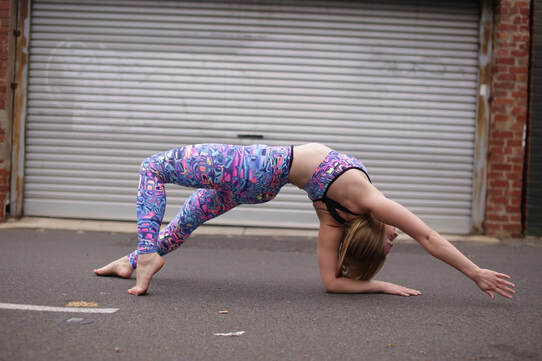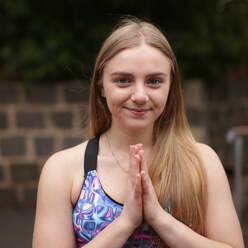top tips for a safe practice w/ HYPERMOBILITY
|
Have you ever met anybody who could touch their toes without a single yoga class? Someone who could drop back into a wheel as soon as they got out of bed in the morning?
Hypermobility is a fun party trick and is often praised in the yoga world - flexibility is one of the most desirable traits for a yogi. However, this ‘bendiness’ can be dangerous to some people’s practice, leading to long-term injuries and chronic pain. |
So, what is hyper mobility?
Hyper mobility is when a person is remarkably flexible and can move beyond a ‘normal’ range of movement in their joints - particularly in the shoulders, elbows, and knees. This can be clinically assessed by the Beighton Scoring System. Joint Hyper mobility Syndrome is a connective tissue disorder, and can be a stand-alone hyper mobility condition, or related to more symptomatic disorders such as Ehlers-Danlos Syndrome or Marfan Syndrome. Hyper mobility is a common condition among yogis.
When does hyper mobility become an issue?
Due to the excessive range of movement in joints, people with hypermobility tend to have instabilities in their joints and are prone to dislocations, subluxations (partial dislocations), sprains, and other soft tissue injuries. Along with this comes extra stress on joints, during repetitive motions in sports and yoga (hello, chaturanga!) - causing a loss of synovial fluid in the joints. In the short-term, this causes feelings of stiffness, but ultimately, it can lead to osteoporosis due to constant friction between bones.
Top tips for a safe practice with hyper mobility:
1. FOCUS ON YOUR STABILITY
Keep your pelvis in a natural position, stack your hips, and drop to your knees or forearms when needed (if you feel your stomach is dropping below hip height or if your elbows are ‘locking out’) as opposed to putting pressure on your hands and feet, in order to protect your lower back and shoulders.
2. Avoid pushing yourself beyond your range
You should push yourself beyond your comfort zone, but avoid poses that are painful (sharp, stinging or pinching) to you. If you need to, make modifications, such as bending your knees if you are hyperextended in forward fold to avoid injury.
3. Use props to improve your alignment
Use props such as a strap and blocks to help keep your body in alignment. It’s better to have your body aligned with a light stretch than to stretch deeply while out of alignment. In this case, blocks are used to keep certain body parts elevated, to avoid moving too deep into the pose due to extra-stretchy ligaments, and keep joints from receiving too much pressure.
4. Find your balance
Too much yin can destabilize joints and stretch already overstretched ligaments. This is because in yin yoga, long passive holds are used to gently release muscle tension and tissue adhesions. In a non-hypermobile person, the ligaments will protect joints and nerves. However, in a hypermobile person, there is an increased risk of pinched nerves, ligament strains and subluxations (partial dislocations) in joints.
5. Practice active engagement
Practice poses with active engagement in order to expand your control over your body and maximize your range capability. For example, in standing splits the focus should be on grounding down the standing foot and slightly bending the knee, squeezing outer hips to midline, squaring hip bones towards the ground, and flexing toes of the top foot to engage the entire leg (hamstrings and quads).
Copyright © 2019

